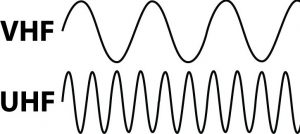
The most obvious difference between VHF and UHF antennas is the size. A half-wave dipole for channel 2 will be 10 times longer than for channel 28. This means that a much more elaborate UHF antenna can be constructed without the antenna becoming physically unmanageable. With more elements added to the UHF antenna, higher gain and directivity can be obtained. In the early days of TV and radio, VHF was more common because the current band reception capabilities of UHF were still lacking. Another reason why VHF remained popular for so long was due to the aforementioned efficiency when inducing a current which meant they were less likely to suffer from interference.
Choosing the right antenna is just as important as choosing your TV, but it’s something that most people disregard. With the right device securing your signals, you’ll not only get a high definition resolution but also access to more channels than you’ve ever had before, depending on where you’re located.

Leave A Comment